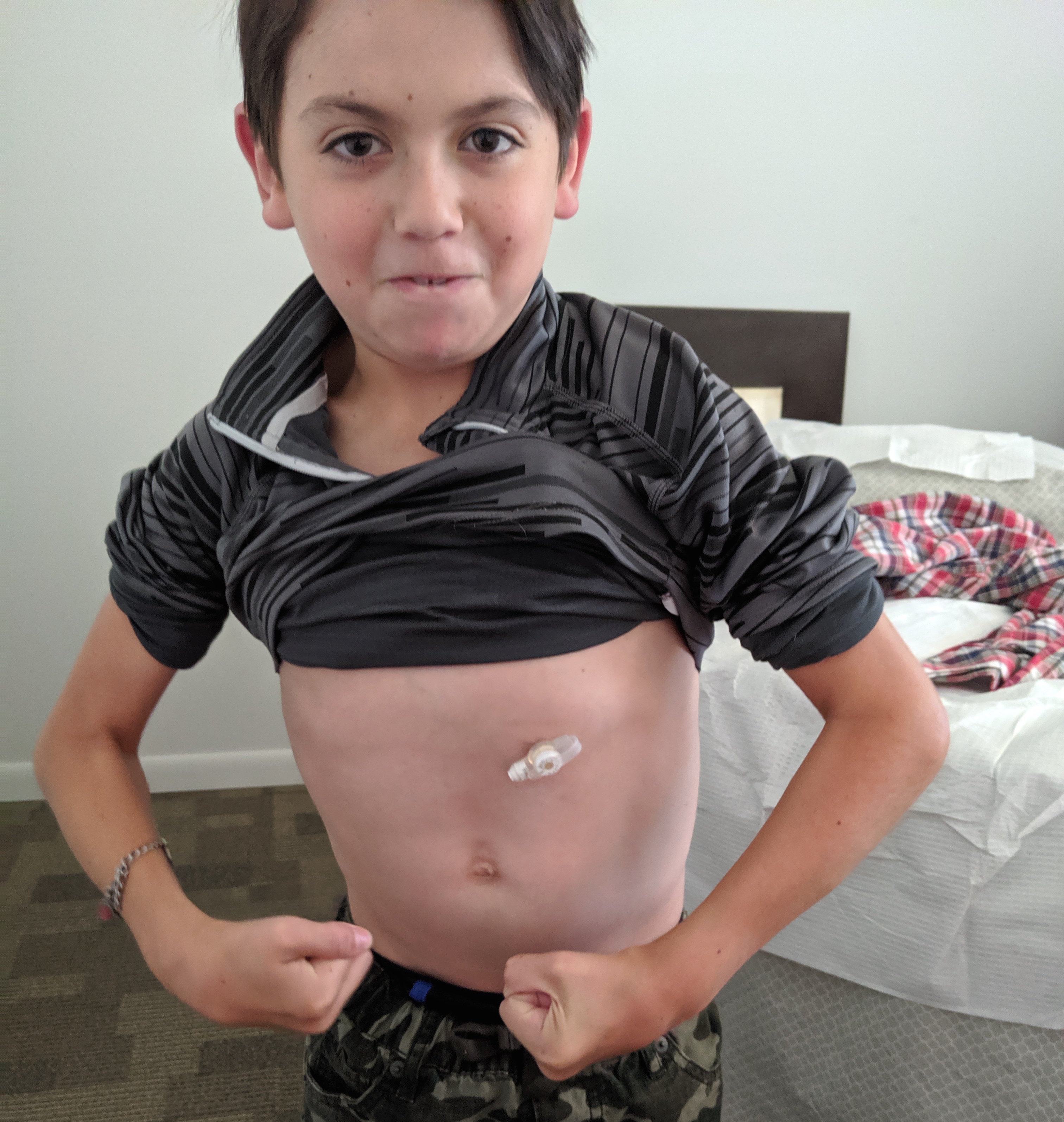
DAILY MANAGEMENT
Diet and cornstarch
LIFE BY THE CLOCK
GSD not only affects the child, but also deeply affects the parents and family of the child born with this disease. Diet is the cornerstone of treatment. Survival requires numerous small meals, consumption of uncooked cornstarch, and a heal or finger stick to test blood sugar levels every few hours around the clock. Vigilence is needed 24 hours a day, 7 days a week, without exception. One low blood sugar can result in severe hypoglycemia leading to seizure, coma and death.
Glycogen Storage Disease was almost always fatal until 1971, when it was discovered that continuous glucose therapy could prevent hypoglycemia. In 1982 cornstarch therapy was introduced as a slow release form of glucose. Cornstarch is a complex carbohydrate that is difficult for the body to digest; therefore it acts as a slow release carbohydrate and maintains normal blood sugar levels for a longer period of time than most carbohydrates in food. Ingesting regular doses of uncooked Argo cornstarch throughout the day enables people with GSD to wait three to four hours between meals.
In 2012 the FDA approved Glycosade for the dietary management of GSD. Glycosade is a "superstarch" that can maintain blood sugar levels for 7-8 hours overnight, allowing GSD patients and their families to get a full night of sleep. This was the first major breakthrough in the management of GSD in over 25 years. Studies are currently being conducted on the use of Glycosade during the daytime hours. After nearly 38 years, cornstarch remains the only approved therapy for the control of blood glucose in patients with GSD. Learn more about Glycosade.
Dietary Restrictions
In addition to drinking cornstarch every few hours around the clock, people with GSD1 must also eat small meals every one to four hours in order to maintain blood glucose at an appropriate level. The GSD diet is very restricted as foods containing sucrose (table sugar,) fructose (sugar found in fruits,) and lactose and galactose (sugars found in milk products) must be avoided. This means no fruit, juice, milk, cookies, cakes, candy or ice cream because these sugars end up as glycogen trapped in the liver. Eating this often and with such harsh restrictions is usually very difficult for a young child.
To avoid a crisis situation, many children diagnosed with GSD1 have a gastric or naso-gastric tube placed. In infancy, the tube is critical for frequent feeds during the day and for using a continuous feeding pump at night. This alternative route of ingestion will also help during times of normal childhood illnesses when hypoglycemia and acidosis can occur more often.
=
-
Signs & Symptoms
The primary symptom of GSD1 in infancy is a low blood sugar level.
This template controls the elements:
FOOTER: Footer Title, Footer Descriptions
CUSTOM MENU: Images and columns into header main menu submenu items
* This message is only visible in administrative mode
The Children's Fund for
Glycogen Storage Disease Research
20 Sherwood Lane
Cheshire, CT 06410


" ... because every child deserves to be healthy."



